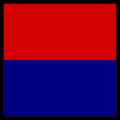| 103rd (Lancashire Artillery Volunteers) Regiment Royal Artillery | |
|---|---|
 The crest of 103 Regiment Royal Artillery | |
| Active | 1967 – present |
| Country | England |
| Allegiance | |
| Branch | |
| Type | Royal Artillery |
| Role | Field support |
| Size | 4 Batteries 432 personnel [1] |
| Part of | 4th Brigade |
| Garrison/HQ | Jubilee Barracks, St Helens |
| Nickname | The North West Gunners / #TEAM103 |
| Mottos | Ubique – Everywhere.Quo Fas et Gloria Ducunt – Where Right and Glory Lead. |
| Colours | 105mm Light Gun – The Colours of the Royal Regiment of Artillery are its Guns or Weapon Systems. When on parade on Ceremonial occasions the Guns and Weapon Systems are to be accorded the same compliments as the Standards, Guidons and Colours of the Cavalry and Infantry. |
| March | The Royal Artillery Slow March |
| Anniversaries | 1 April 1967 |
| Equipment | L118 Light Gun |
| Insignia | |
| Cap Badge |  |
| Tactical Recognition Flash (TRF) |  |
| Tartan | Crawford (Pipers & Drummers kilts) |
103rd (Lancashire Artillery Volunteers) Regiment Royal Artillery is part of the Army Reserve and primarily has sub-units throughout the Greater Manchester and Merseyside area of the North-West of England, in recent years it has extended its footprint to Wolverhampton, Isle of Man, Carlisle and Nottingham. Its purpose is to provide reinforcements for units that use the 105 mm L118 Light Gun.